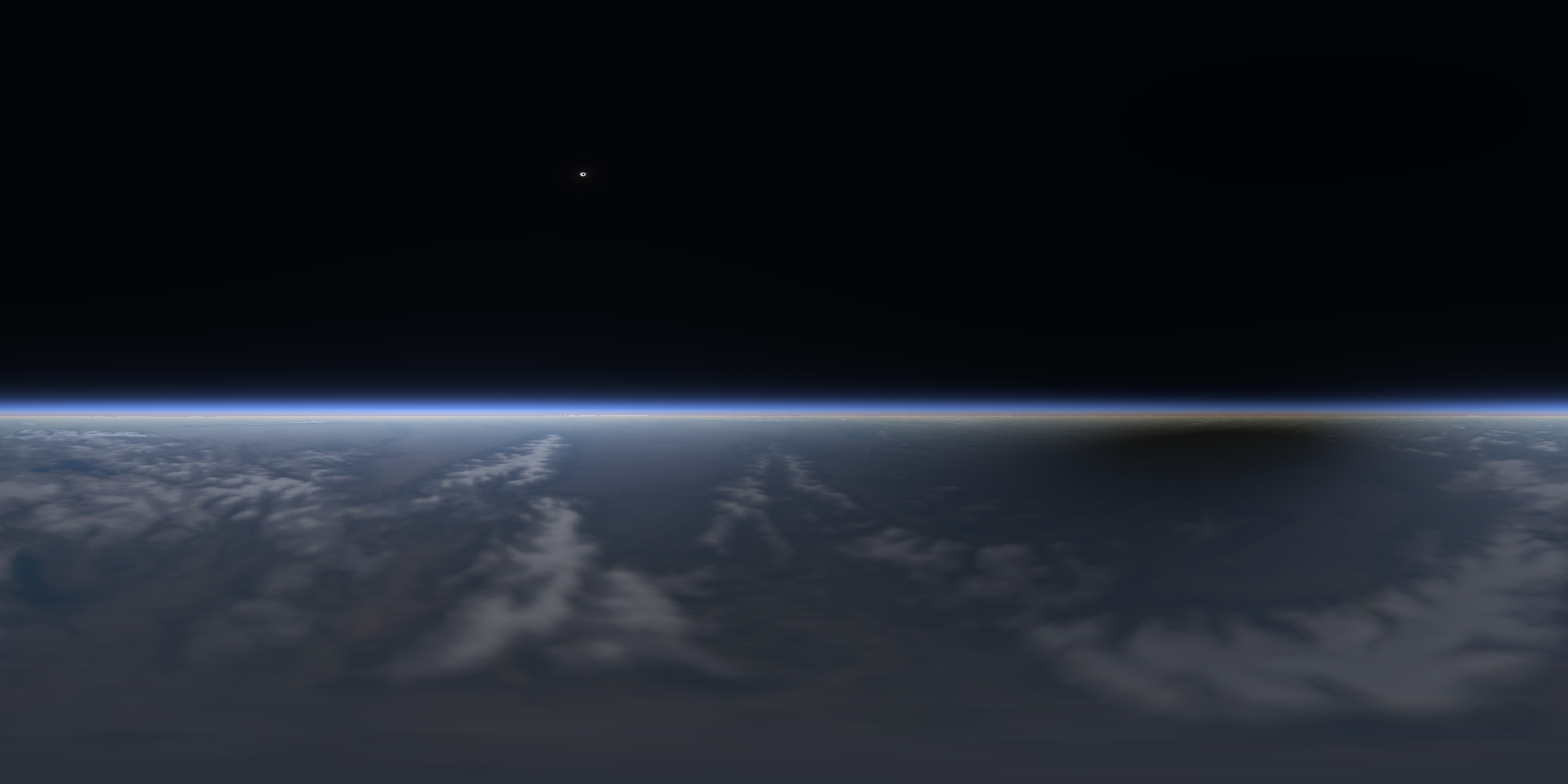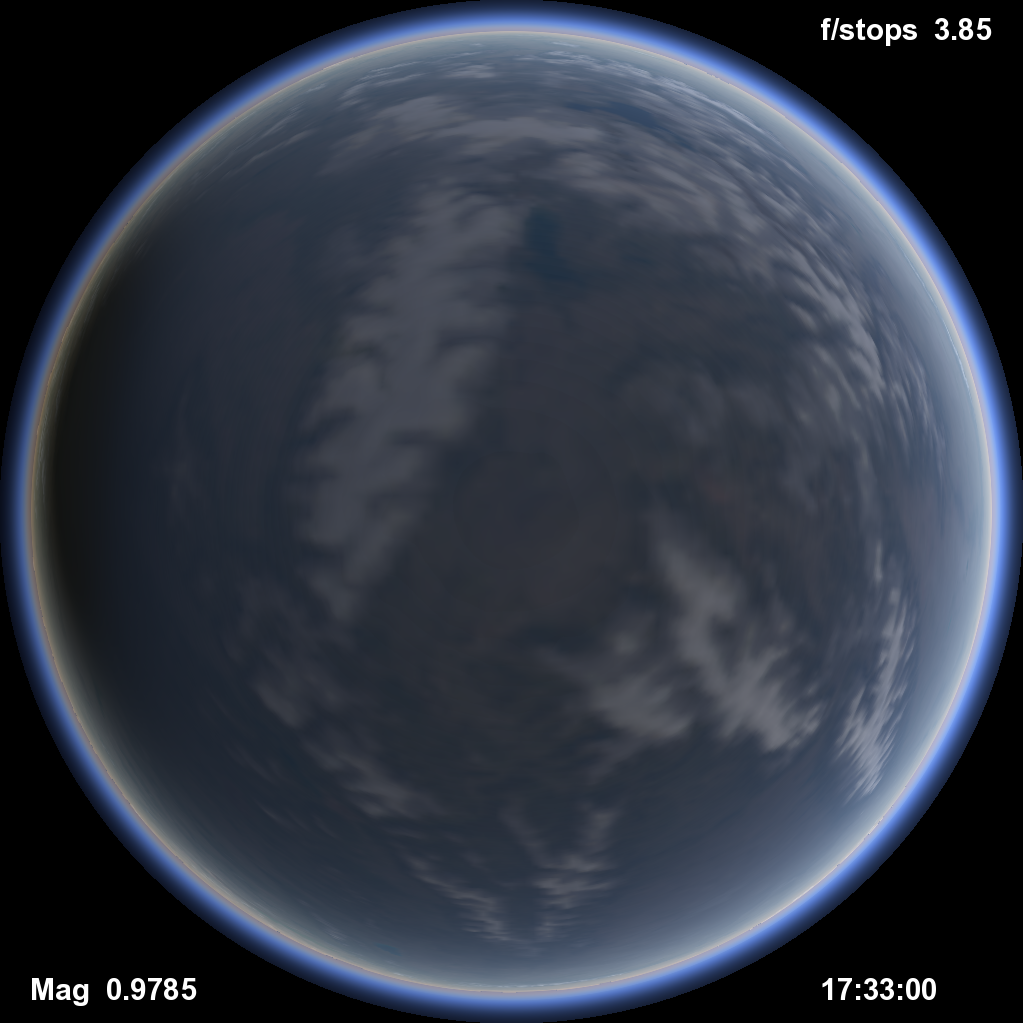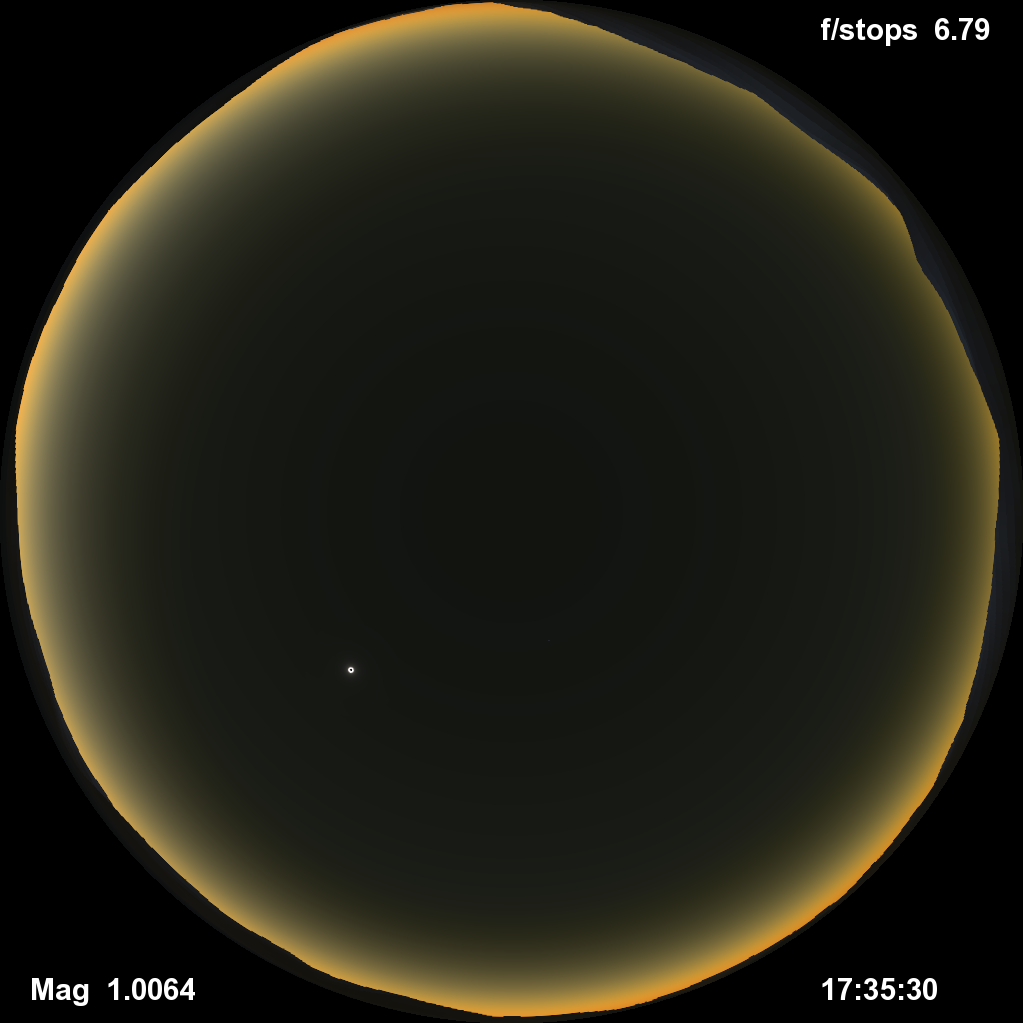



All-sky simulation of solar eclipse
in clear skies looking up at the sky hemisphere from the ground. We see the moon's shadow sweeping across the sky. To render this, the shape of the moon's shadow slicing through the atmosphere is considered. Single scattering is calculated first as light from the parts of the sky in the penumbra are scattered and observed, including when the viewpoint is within the umbra. Limb darkening is accounted for when determining the solar irradiance at various locations in the penumbra. Secondary scattering is estimated to help calculate the sky brightness within the umbra. The location is Jackson Wyoming for the 2017 eclipse. Brightnesses are adjusted uniformly over the images by differing amounts when the eclipse magnitude is somewhat less than unity (when one is significantly outside the umbra). Note the sky (in this clear sky case) would be darker than most eclipses due to the thin clean air at this altitude.North is up and east is to the left in this fish-eye or dome view. The horizon rings around the edge. We can see Venus coming out near and during totality. The corona is visible even before totality as part of it exceeds the sky brightness, and glare from the bright crescent sun in the camera (or human eye) isn't being included.
Here are cylindrical (360 degree) and polar (upward looking) animated views as MP4 files. The MP4 file creation process is presently creating some banding artifacts that are absent in the still images. I was able to suppress these somewhat with the tradeoff of larger files. These ground views were updated in 2016.
Here are cylindrical (360 degree VR) and polar (downward looking) animated views as MP4 files. This was made in 2016.
Time Eclipse magnitude Stellar limiting magnitude at zenith Result from another paper (for another eclipse & location)
------------ ----------------- ------------------------------------ ----------------------------------------------------------
1st Contact 0.0 -2.4
0.55 -1.9
0.9 -0.1
0.97 +1.3
0.976 +0.3
0.983 +2.0 +0.7
0.997 +3.3 +2.8
2nd contact 1.00 +3.4 +3.0
During Total 1.01 +3.6

Panoramic view with the upper edge about 40 degrees above the horizon. Movies in
polar / hemispheric
and
360 degree panoramic
projections. Here the sun is low in the sky and the shadow can acquire a spectacular tunnel-like appearance.
What happens when an eclipse happens during twilight? We can see an example from 1992 in Boulder where the annularity happened along a track ending near Los Angeles. In this case maximum eclipse was about 50 minutes after sunset. If the Earth were transparent Boulder would have had at least very close to an annular eclipse.
The image frame above (click for animation) shows about an hour after sunset where the top frame has the eclipse and the bottom from the day before is a control without an eclipse. The twilight arch is dimmed by the eclipse though the stars and city lights remain the same. I recall a similar visual view of the twilight that evening. Even though it was clear the twilight seemed like a cloudy day, and never recovered after maximum eclipse.